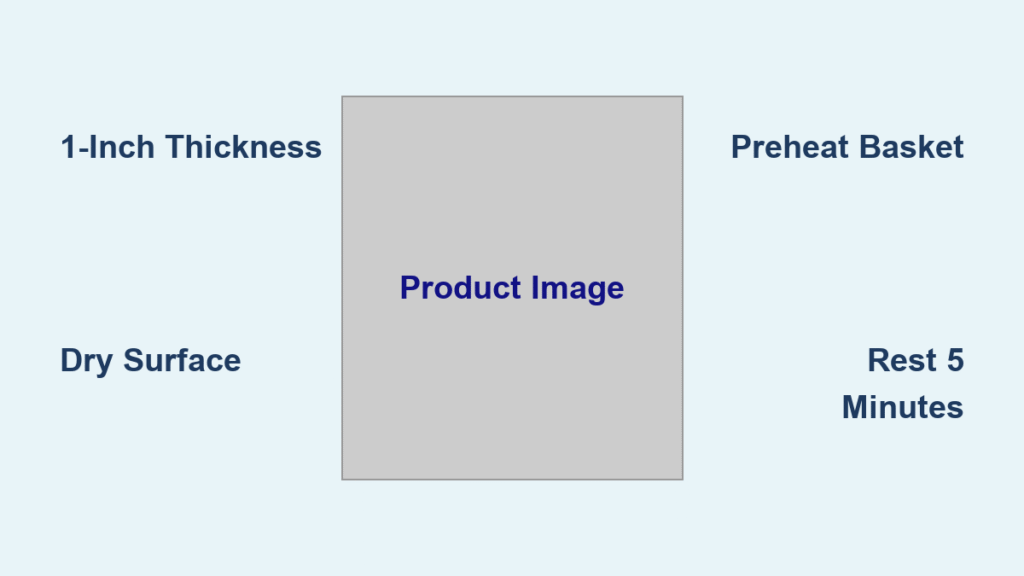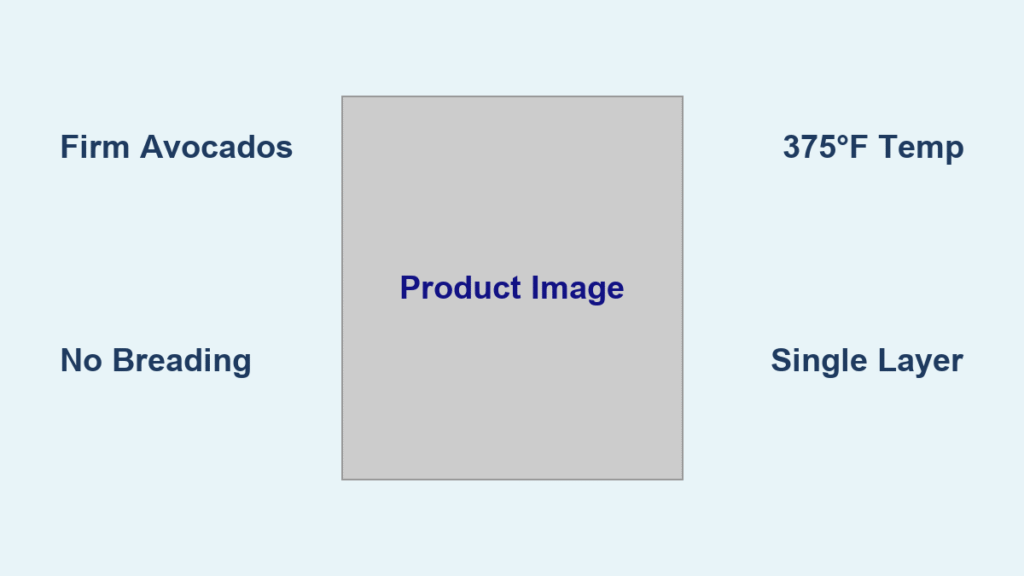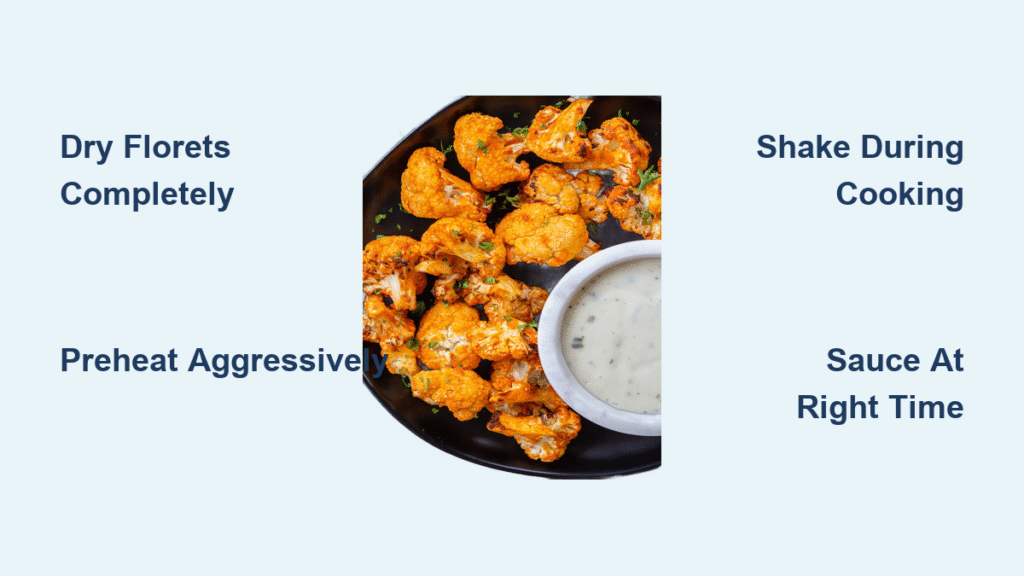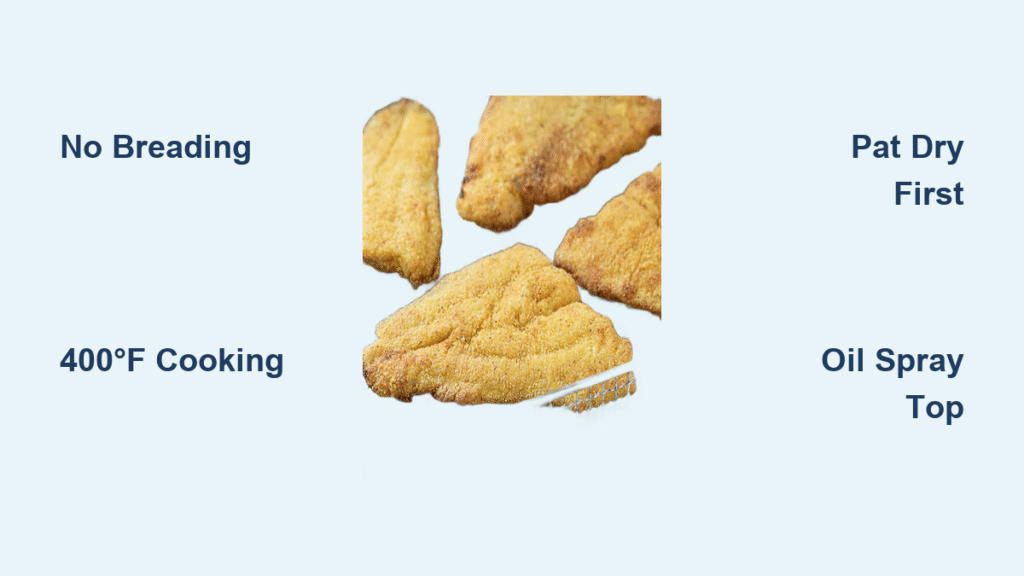You’re staring at a grocery-store ribeye, craving that charred crust and juicy interior, but your grill’s buried under winter snow and pan-searing means oil splatters everywhere. Your air fryer sits quietly on the counter—your secret weapon for steakhouse results in half the time. Skip the smoke alarms and messy stovetops: air frying locks in juices while delivering an insane sear through rapid 400°F circulation. In just 10 minutes, you’ll transform a humble cut into a tender, caramelized masterpiece that rivals any $40 restaurant plate.
Forget everything you thought about air fryers being “just for fries.” This countertop powerhouse uses hyper-precise convection to create Maillard reaction magic—browning proteins at molecular level without drowning them in oil. The key? Mastering four non-negotiables: cut thickness, surface dryness, thermometer precision, and strategic resting. No more guessing games or gray-ringed disasters. By the end of this guide, you’ll pull perfectly medium-rare steaks from your basket every single time—even on a Tuesday night.
Why Your Ribeye Thickness Determines Steak Success

Ribeye vs. Strip: Which Cut Wins in the Air Fryer?
Ribeye dominates for air frying thanks to its intricate marbling that self-bastes during cooking. Target an 8-ounce, 1-inch thick boneless cut—the fat melts into the meat instead of dripping away like on a grill. New York strip works as a leaner alternative but needs extra oil coating (1 tablespoon vs. 1 teaspoon) to prevent dryness. Avoid bone-in cuts—they crowd the basket and create uneven heat pockets around the bone.
Steer clear of thin steaks under 1 inch. That “value pack” sirloin? It’ll turn into shoe leather before developing crust. Your minimum thickness is non-negotiable: 2.5 cm (1 inch). For 3 cm (1.2-inch) ribeyes, plan 8-10 minutes total. If your steak’s closer to ¾ inch, slash cook time to 7-8 minutes max or you’ll sacrifice juiciness for chewiness.
The Thickness Temperature Trap
Thicker isn’t always better—steaks over 1.5 inches require flipping every 3 minutes to avoid raw centers. For a 260g (9 oz) 3 cm ribeye: start at 400°F for 6 minutes, flip, then cook 2 more minutes for medium-rare. Critical mistake: skipping the thermometer. Pull steaks 5°F below target temp (125°F for medium-rare) because residual heat keeps cooking them while resting. Guessing doneness based on time alone risks $20 down the drain.
Dry Surface Secrets for Maximum Crust
Why 20 Minutes Tempering Makes or Breaks Your Steak
Never toss a cold steak into the basket. Pull it from the fridge 20-30 minutes pre-cook so the center isn’t icy when searing starts. Cold meat seizes up, creating that dreaded gray band between crust and pink center. While tempering, pat aggressively dry with paper towels—water repels heat, sabotaging browning. Your towel should come away clean; repeat until no moisture transfers.
Oil Application: The Browning Catalyst
Skip heavy marinades—they steam instead of sear. Instead, lightly brush both sides with 1 teaspoon olive oil (or avocado oil for higher smoke point). This thin film:
– Creates instant sizzle upon basket contact
– Helps salt/pepper adhere without sliding off
– Prevents sticking without adding smoke
Season with only kosher salt and cracked pepper 10 minutes pre-cook. Fancy rubs? Save them—garlic powder or paprika burns at 400°F. If using, apply after the first flip when surface moisture drops.
Air Fryer Setup Hacks You’re Missing

Why Preheating the Empty Basket is Non-Negotiable
Never skip the 3-minute preheat at 400°F. A cold basket steams the steak initially, creating a boiled texture. Preheating ensures immediate crust formation the second meat hits the basket. Pro move: place a small oven-safe bowl under the basket near the heating element. This radiates extra heat upward, mimicking a broiler for deeper char.
The Overcrowding Disaster You’re Inviting
Cook one steak per batch. Two 1-inch ribeyes touching? You’ve created a steam chamber that prevents browning. Leave at least 1 inch between steaks for air circulation. For multiple servings, work in batches—you’ll spend less time cleaning splattered grease than salvaging ruined meat.
Exact Cooking Times That Actually Work

1-Inch Steak Doneness Chart (400°F)
| Doneness | Pull Temp | Total Time | Flip Time |
|---|---|---|---|
| Rare | 120°F | 8 min | 4 min |
| Medium-Rare (Recommended) | 125°F | 10 min | 5 min |
| Medium | 140°F | 12 min | 6 min |
| Medium-Well | 145°F | 13 min | 6.5 min |
Critical nuance: Flip once at the halfway mark. Aggressive flipping interrupts crust development. For rare-to-medium-rare on 3 cm ribeyes: 6 minutes first side, 2 minutes second side. Never cook beyond medium-well—lean cuts dry out fast in dry heat.
Thermometer Technique: Avoid the Center Mistake
Insert horizontally from the side, not top-down. A vertical poke measures surface temp (already 400°F), not the true center. Slide the probe sideways through the thickest part until it hits the middle. Pull steaks at 125°F for medium-rare—they’ll hit 130°F while resting. No thermometer? Press the steak: rare feels like your palm below the thumb (soft), medium like your thumb touching index finger (springy). But guessing risks toughness—buy a $10 instant-read.
Garlic-Herb Butter: The $3 Upgrade That Wows
Build Your Butter in 90 Seconds
While steaks rest, mix:
– ¼ cup softened butter
– 1 minced garlic clove
– 1 tsp each chopped parsley, rosemary, thyme
– Pinch of salt
Roll into a log using parchment paper, chill 15 minutes, then slice medallions. Place one on your hot steak—the melting butter creates instant pan sauce while infusing garlic essence. Pro tip: add a splash of Worcestershire for umami depth. Store extra logs frozen for 3 months.
Resting and Slicing: Why Your Steak Bleeds Out
The 5-Minute Rule That Saves Juices
Rest under loose foil for 5-10 minutes—no peeking! Cutting too soon releases all juices onto the plate. During rest, proteins relax, reabsorbing moisture from the center outward. Critical error: tenting tightly steams the crust. Loosen the foil so steam escapes while retaining heat.
Slice Against the Grain Like a Pro
Identify muscle fibers first—they run parallel like railroad tracks. Cut perpendicular across them (90 degrees) into ¼-inch slices. This shortens tough fibers, making each bite tender. Mistake to avoid: slicing with the grain (parallel to fibers)—you’ll get chewy, stringy steak.
Fix These Air Fryer Steak Disasters Now
Why Your Steak Smokes Like a Campfire
Trim excess external fat—it renders too fast, dripping onto heating elements. Place a slice of bread or 2 tbsp water in the drip tray below the basket to catch drips and absorb smoke. Never use butter in the basket—it burns instantly at 400°F. Reserve butter for post-cook topping only.
Stop Uneven Browning in Its Tracks
Rotate the basket 180 degrees when flipping. Air fryers have hot spots near the heating element (usually back/right). If one side browns faster, reposition the steak toward the cooler zone mid-cook. Always dry the surface—a single damp spot creates steam pockets that prevent searing.
Reheating Leftovers Without Ruining Them
Never microwave—it turns steak rubbery. Instead:
1. Air fryer: 350°F for 3 minutes, flipping once
2. Oven: 250°F until internal temp hits 110°F
Key: reheat cold from the fridge—room-temp steak overcooks instantly. Add leftover juices to the container to maintain moisture.
Perfect Pairings That Elevate Your Steak
Air Fryer Sidekick Sides (Cook Simultaneously)
- Crispy smashed potatoes: Toss baby potatoes in oil, air fry 15 min at 400°F, smash, then 5 more minutes
- Blistered asparagus: Toss with 1 tsp oil, 8 min at 400°F
- Wedge salad hack: Place lettuce wedges on top rack while steak cooks—they warm slightly without wilting
Pro move: Cook sides first, then rest them while steak cooks. No timing stress.
Your air fryer isn’t just for appetizers—it’s a precision steak machine. By respecting the 1-inch thickness rule, drying surfaces aggressively, and pulling at 125°F, you’ll never suffer overcooked disappointment again. Tonight’s dinner? A $20 grocery steak with $50 presentation, ready faster than takeout. Grab your thermometer and basket—your perfect crust awaits.





